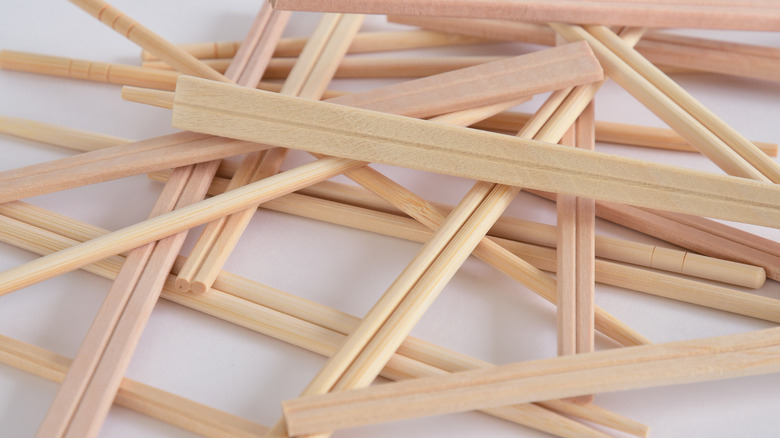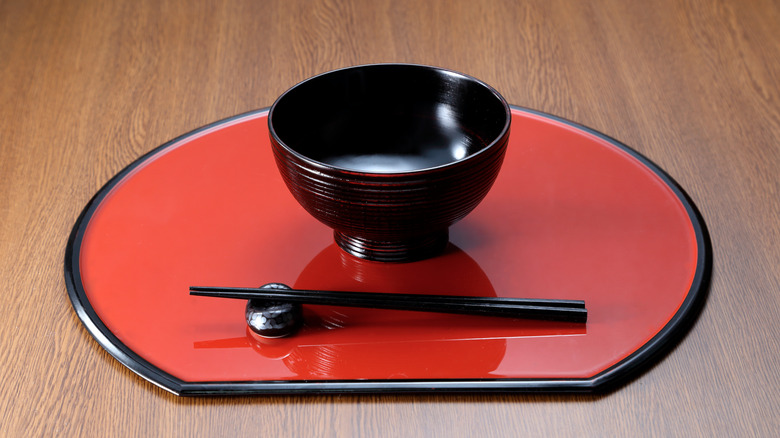The Rude Behavior To Avoid Right After Splitting Chopsticks In Japan
Most of us are no strangers to disposable chopsticks. After all, they are as much a part of the takeout dining experience as paper napkins, cardboard to-go boxes, and plastic cutlery. But while there are few rules involving the use of disposables in polite society, the same cannot be said in Japan, where one specific rule involving dining etiquette extends exclusively to the use of disposable chopsticks or waribashi.
To many, taking disposable chopsticks, breaking them apart and rubbing them together may be an instinctive thing to do, particularly if you are worried about ending up with a mouthful of splinters. And while this isn't a problem if you are dining at a Chinese restaurant, the same cannot be said if you are at a Japanese restaurant — or if you are dining with a Japanese host — where the act is seen as an insult. The view is that splinters are only a problem if the restaurant's operators are cheap, and they have no desire to be viewed as being that. There is even a name for this particular breach of etiquette: kosuribashi.
Use of chopsticks in Japan is deeply rooted in culture and religion
That's not the only thing you need to remember when you're using chopsticks in polite Japanese society, because there is a whole list of things you should and should not do. Another no-no is to leave your chopsticks so they stand upright in bowl of rice, since that is the same way rice is presented during a Buddhist funeral ritual. Diners should also avoid piercing the food like a skewer or wielding chopsticks by putting one stick in each hand, the way you might do with a fork and knife.
The Japanese may have plenty of rules governing their use of chopsticks, but there are reasons for that. The utensil is deeply rooted in the cultural and religious practice of viewing the chopstick as a bridge between the human and the divine.

